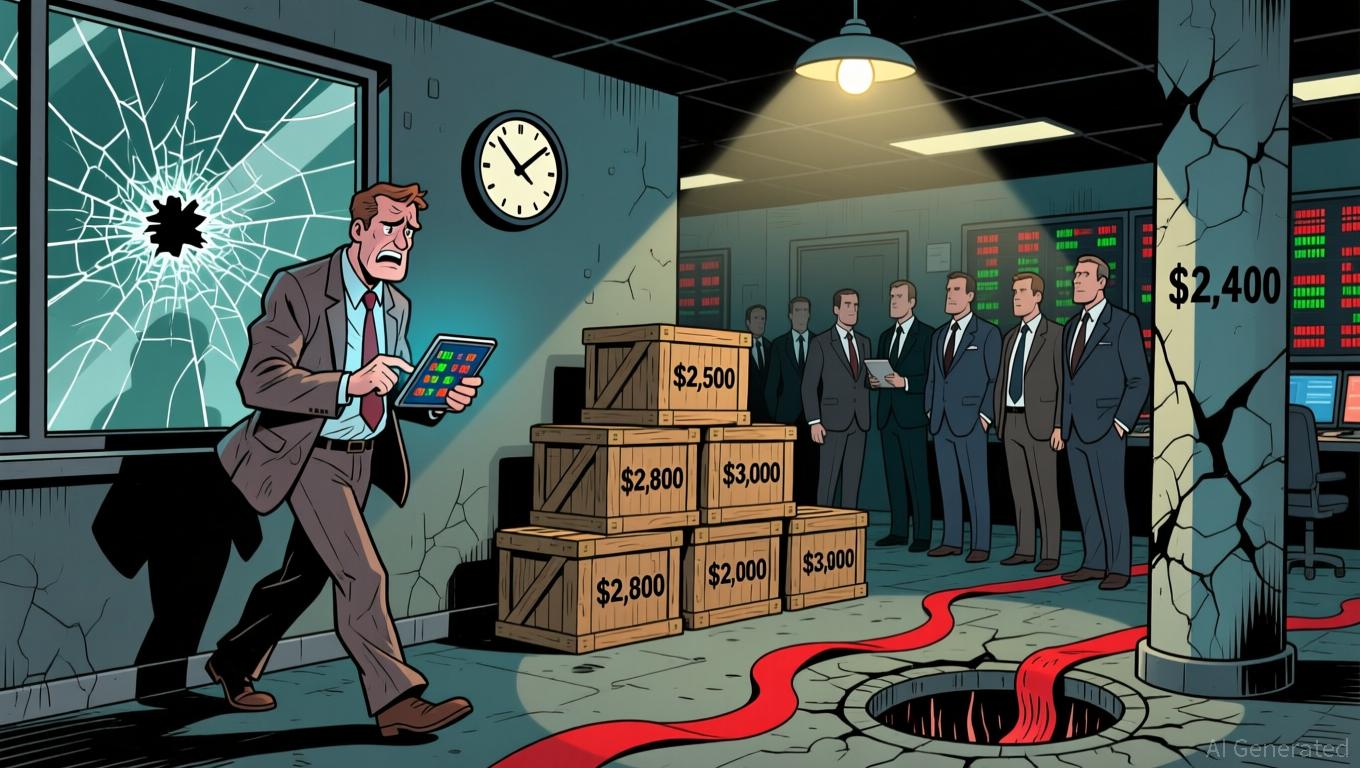Navigating the Ups and Downs of Cryptocurrency: Does USDT Remain a Secure Refuge?
- Tether's USDT faces stability risks as S&P downgrades its rating to "weak" due to high-risk reserves like bitcoin and gold , now restricted by new U.S. regulations. - The 2025 crypto crash exposed systemic vulnerabilities, with algorithmic stablecoins depegging and triggering panic, despite USDT maintaining its $1 peg. - Regulatory frameworks like the EU's MiCAR and U.S. GENIUS Act mandate reserve transparency and liquidity standards, forcing Tether to launch a compliant alternative, USAT. - Investor beh
USDT’s Stability: Is It Just an Illusion?
USDT, which leads the stablecoin market by share, has come under greater scrutiny regarding the makeup of its reserves.
The vulnerability of USDT’s peg became evident during the crypto “black swan” crash in October 2025, when
Regulatory Oversight and Systemic Threats
Authorities are now treating stablecoins as integral to the financial system rather than fringe assets.
In turn, the EU’s Markets in Crypto-Assets Regulation (MiCAR) and the U.S. GENIUS Act are transforming the stablecoin sector.
Investor Psychology and Market Reactions
The events of October 2025 also demonstrated how psychological biases can worsen stablecoin volatility.
These psychological effects are magnified by the interconnected nature of digital assets.
Leverage and Debt Management Challenges
Excessive leverage and liquidity pressures have further revealed weaknesses in stablecoin systems. During the 2025 turmoil,
Regulators are now urging stablecoin issuers to hold high-quality liquid assets (HQLA), such as cash and short-term government bonds, to support redemption stability.

Does USDT Remain a Safe Haven?
The answer depends on how risks are weighed against new opportunities. While
For those investing in stablecoins, diversification and prudent risk management are essential.
Final Thoughts
USDT’s status as a safe haven in 2025 is far from straightforward. Despite holding a near-$1 peg and a large share of the market, its stability now depends on regulatory adaptation, reserve openness, and investor sentiment. As the digital asset sector matures, the boundary between innovation and systemic risk becomes increasingly blurred. For investors, successfully navigating this environment means closely monitoring stablecoin fundamentals and understanding the regulatory and psychological forces that will shape their future.
Disclaimer: The content of this article solely reflects the author's opinion and does not represent the platform in any capacity. This article is not intended to serve as a reference for making investment decisions.
You may also like
XRP News Today: Abu Dhabi’s Green Light Establishes UAE as a Pioneer in Stablecoin Development
- Ripple's RLUSD stablecoin gains Abu Dhabi regulatory approval as UAE advances digital finance leadership. - ADGM's "Accepted Fiat-Referenced Token" designation enables institutional use for lending and cross-border payments. - RLUSD's $1.2B market cap growth reflects institutional demand, backed by USD reserves and dual blockchain operations. - UAE's ADGM-DIFC regulatory synergy attracts global fintechs , with Ripple expanding partnerships across Africa and Asia. - Regulatory milestones position RLUSD to
Ethereum Updates: Ethereum Drops to $2,800, Prompting Surge in Demand for ZKP's Hardware-Based Presale
- Ethereum's price fell below $2,800, triggering $6.5M liquidations and testing critical support levels amid declining on-chain demand metrics. - Institutional players like BitMine accumulated 3.62M ETH (~$10.4B) despite the selloff, signaling long-term bullish conviction. - ZKP's hardware-driven presale gained traction with $17M in ready-to-ship Proof Pods and Miami Dolphins partnership for privacy-focused sports analytics. - Mutuum Finance's $19M DeFi presale and ZKP's auction model with $50K wallet caps

Vitalik Buterin Supports ZKsync: What This Means for Layer 2 Scaling
- Vitalik Buterin endorsed ZKsync in late 2025, highlighting its "underrated and valuable" work alongside the Atlas upgrade achieving 15,000 TPS and $0.0001 fees. - ZKsync's zero-knowledge rollups and EVM compatibility enabled institutional adoption by Deutsche Bank , Sony , and Goldman Sachs for cross-chain and enterprise use cases. - The Fusaka upgrade aims to double throughput to 30,000 TPS by December 2025, positioning ZKsync to compete with Polygon zkEVM and StarkNet in Ethereum's Layer 2 landscape. -

The ZK Atlas Enhancement: Revolutionizing Blockchain Scalability?
- ZKsync's 2025 Atlas Upgrade achieves 15,000–43,000 TPS with sub-1-second finality, addressing Ethereum L2 scalability bottlenecks via Airbender proofs and modular OS. - DeFi protocols like Aave and Lido leverage ZKsync's $0.0001/tx costs to unify liquidity, while Deutsche Bank and Sony adopt its trustless cross-chain infrastructure for compliance and transparency. - ZK token surged 150% post-upgrade, with TVL hitting $3.3B and analysts projecting 60.7% CAGR for ZK Layer-2 solutions by 2031 amid instituti
